A) It is the graph of translated 4 units to the right, stretched vertically by a factor of 3 and translated 2 units up. The equation is
B) It is the graph of translated 4 units to the right, shrunken vertically by a factor of and translated 2 units up. The equation is
C) It is the graph of translated 4 units to the right, shrunken vertically by a factor of and translated 2 units up. The equation is
D) It is the graph of translated 4 units to the right, stretched vertically by a factor of 3 and translated 2 units up. The equation is
F) C) and D)
Correct Answer

verified
Correct Answer
verified
Multiple Choice
Graph the point symmetric to the given point.
-
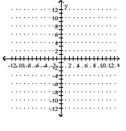
A) ![]()
B) ![]()
C) ![]()
D) ![]()
F) B) and C)
Correct Answer

verified
Correct Answer
verified
Multiple Choice
Graph the function.
-
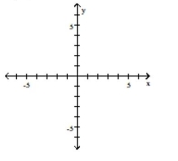
A) ![]()
B) ![]()
C) ![]()
D) ![]()
F) B) and D)
Correct Answer

verified
Correct Answer
verified
Multiple Choice
Give the domain and range of the relation. -
A) domain: ; range:
B) domain: ; range:
C) domain: ; range:
D) domain: ; range:
F) None of the above
Correct Answer

verified
Correct Answer
verified
Multiple Choice
The graph of a linear function f is shown. Identify the slope, y-intercept, and x-intercept.
-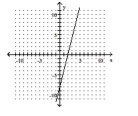
A)
B)
C)
D)
F) A) and D)
Correct Answer

verified
Correct Answer
verified
Multiple Choice
Describe how the graph of the equation relates to the graph of y
-![Describe how the graph of the equation relates to the graph of y y = \sqrt [ 3 ] { x } - A) y = ( x - 3 ) ^ { 2 } B) y = x ^ { 2 } - 3 C) y = x ^ { 2 } + 3 D) y = ( x + 3 ) ^ { 2 }](https://d2lvgg3v3hfg70.cloudfront.net/TB7514/11ed7972_f443_5749_9733_d7532343c18f_TB7514_11.jpg)
A)
B)
C)
D)
F) None of the above
Correct Answer

verified
Correct Answer
verified
Multiple Choice
Provide an appropriate response. -If the point (a, b) is in the fourth quadrant, in what quadrant is (a, -b) ?
A) I
B) III
C) IV
D) II
F) A) and D)
Correct Answer

verified
Correct Answer
verified
Multiple Choice
Find the slope of the line satisfying the given conditions. -through (3, -8) and (3, 6)
A) 14
B) undefined
C) -14
D) 0
F) A) and C)
Correct Answer

verified
Correct Answer
verified
Multiple Choice
Decide whether the relation defines a function.
-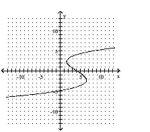
A) Function
B) Not a function
D) undefined
Correct Answer

verified
Correct Answer
verified
Multiple Choice
Graph the function.
-
![Graph the function. - f(x) =\llbracket x]-1 A) B) C) D)](https://d2lvgg3v3hfg70.cloudfront.net/TB7514/11ed7971_d618_5f50_9733_3b4e27cd5952_TB7514_11.jpg)
A) ![]()
B) ![]()
C) ![]()
D) ![]()
F) B) and C)
Correct Answer

verified
Correct Answer
verified
Multiple Choice
Graph the linear function and give the domain and the range. If the function is a constant function, identify it as such.
-
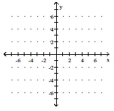
A) ![]()
B) ![]()
C) ![]()
D) ![]()
F) A) and D)
Correct Answer

verified
Correct Answer
verified
Multiple Choice
The graph of a linear function f is shown. Write the equation that defines f. Write the equation in slope-intercept form.
-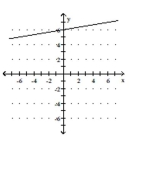
A)
B)
C)
D)
F) A) and B)
Correct Answer

verified
Correct Answer
verified
Multiple Choice
Graph the function.
-
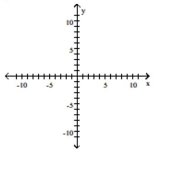
A) ![]()
B) ![]()
C) ![]()
D) ![]()
F) B) and C)
Correct Answer

verified
Correct Answer
verified
Multiple Choice
Graph the function.
-
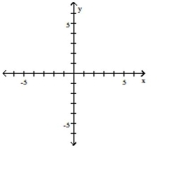
A) ![]()
B) ![]()
C) ![]()
D) ![]()
F) A) and D)
Correct Answer

verified
Correct Answer
verified
Multiple Choice
Find the slope of the line and sketch the graph.
-
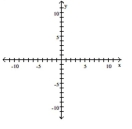
A) ![]()
B)
11ed7969_2718_1517_9733_714f2487f5af_TB7514_11
C)
11ed7969_3107_6ad9_9733_95c2c9021dc0_TB7514_11
D)
11ed7969_3632_f6fa_9733_7b5103f60b8e_TB7514_11
F) B) and D)
Correct Answer

verified
Correct Answer
verified
Multiple Choice
Graph the function.
-
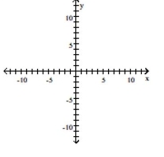
A) ![]()
B) ![]()
C) ![]()
D) ![]()
F) A) and B)
Correct Answer

verified
Correct Answer
verified
Multiple Choice
Determine whether the equation has a graph that is symmetric with respect to the y-axis, the x-axis, the origin, or none of these. -
A) origin only
B) none of these
C) -axis only
D) x-axis only
F) A) and B)
Correct Answer

verified
Correct Answer
verified
Multiple Choice
Find the slope and the y-intercept of the line. -
A) slope: -intercept:
B) slope: 4 ; y-intercept:
C) slope: -intercept:
D) slope: -intercept
F) All of the above
Correct Answer

verified
Correct Answer
verified
Multiple Choice
Give the domain and range of the relation.
-![Give the domain and range of the relation. - A) domain: ( - \infty , - 2 ) \cup ( - 2 , \infty ) ; range: ( - \infty , 0 ) \cup ( 0 , \infty ) B) domain: ( - \infty , \infty ) ; range: ( - \infty , \infty ) C) domain: ( - \infty , 0 ] \cup [ 0 , \infty ) ; range: ( - \infty , - 2 ] \cup [ - 2 , \infty ) D) domain: ( - \infty , 0 ) \cup ( 0 , \infty ) ; range: ( - \infty , - 2 ) \cup ( - 2 , \infty )](https://d2lvgg3v3hfg70.cloudfront.net/TB7514/11eb4054_7b30_1028_ad6e_414140d610da_TB7514_00.jpg)
A) domain: ; range:
B) domain: ; range:
C) domain: ; range:
D) domain: ; range:
F) A) and C)
Correct Answer

verified
Correct Answer
verified
Multiple Choice
The graph of y = f(x) is given. Use the graph to find the function value.
-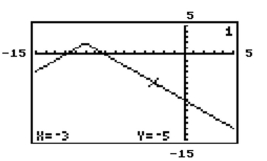 Find f(-3) .
Find f(-3) .
A) -3
B) 2
C) -5
D) None of these
F) All of the above
Correct Answer

verified
Correct Answer
verified
Showing 121 - 140 of 522
Related Exams